In 30+ years of leading organizations through change, XPLANE has encountered more than 36 distinct barriers to change. With a rumbling herd of barriers like this, where do you start when you’re leading organizational change? We recommend an engaging tool called our Barriers to Change card game. Here’s how it works.
In any change initiative or business strategy, there are inevitable barriers to moving forward.
Knowing where to start in identifying these barriers can seem daunting. What questions should you ask? Where should these questions lead? How do you make sense of the barriers?
We have an answer to pinpointing barriers to successful strategy execution and starting an activation plan—and it’s as simple as playing a game, asking the right questions, and turning over cards.
What is the “Barriers to Change” Card Deck?
XPLANE’s tool for unsticking change is our Barriers to Change Card Deck, which illuminates 37 reasons people resist change.
We believe the fastest, most effective path to overcoming resistance starts with empathy—and this deck offers a quick, engaging way to uncover insights that can help shape your approach to resistance and change.
Often used in conjunction with the Activation Curve, this deck is useful when you need clarity or alignment on the distance between your current state (where you are now) and your future state (where you want to be).
Once you are clear on this distance, activation (how you will get there) can start to take shape.

How to Play the Game
The Barriers to Change Card Deck, in its simplest form, is a game with three distinct rounds. Don’t worry—playing the game doesn’t take much time (depending, of course, on discussions that arise). Each round takes about 15-30 minutes depending on the size of the group.

The 3 Phases of Play
- Uncover assumptions
- Understand audience behaviors
- Respond to barriers
About the Deck / Preparation
Each participant has a deck of cards. Each card contains one of 37 quotes on one side and one of six categories on the other side. Each quote represents a specific barrier, e.g., Solution Alignment, Engagement, or Execution. There are also three blank cards on which you can add your own quote / barrier.
Round 1: Uncover Assumptions
Who plays:
People responsible for delivering a change
Step 1. Divide into stacks.
Make two stacks of cards with quotes facing up. Do not at any point in this round turn the cards over. You’ll want to divide cards into a “yes” stack and a “no” stack. The “yes” stack should contain quotes that are relevant to your organization; the “no” stack should contain quotes that are not relevant to your organization.

Step 2. Select top five barriers (cards).
Using the “yes” stack only, have each participant select the top five barriers that best represent the quotes most important to them. (We recommend every participant have their own card deck.)
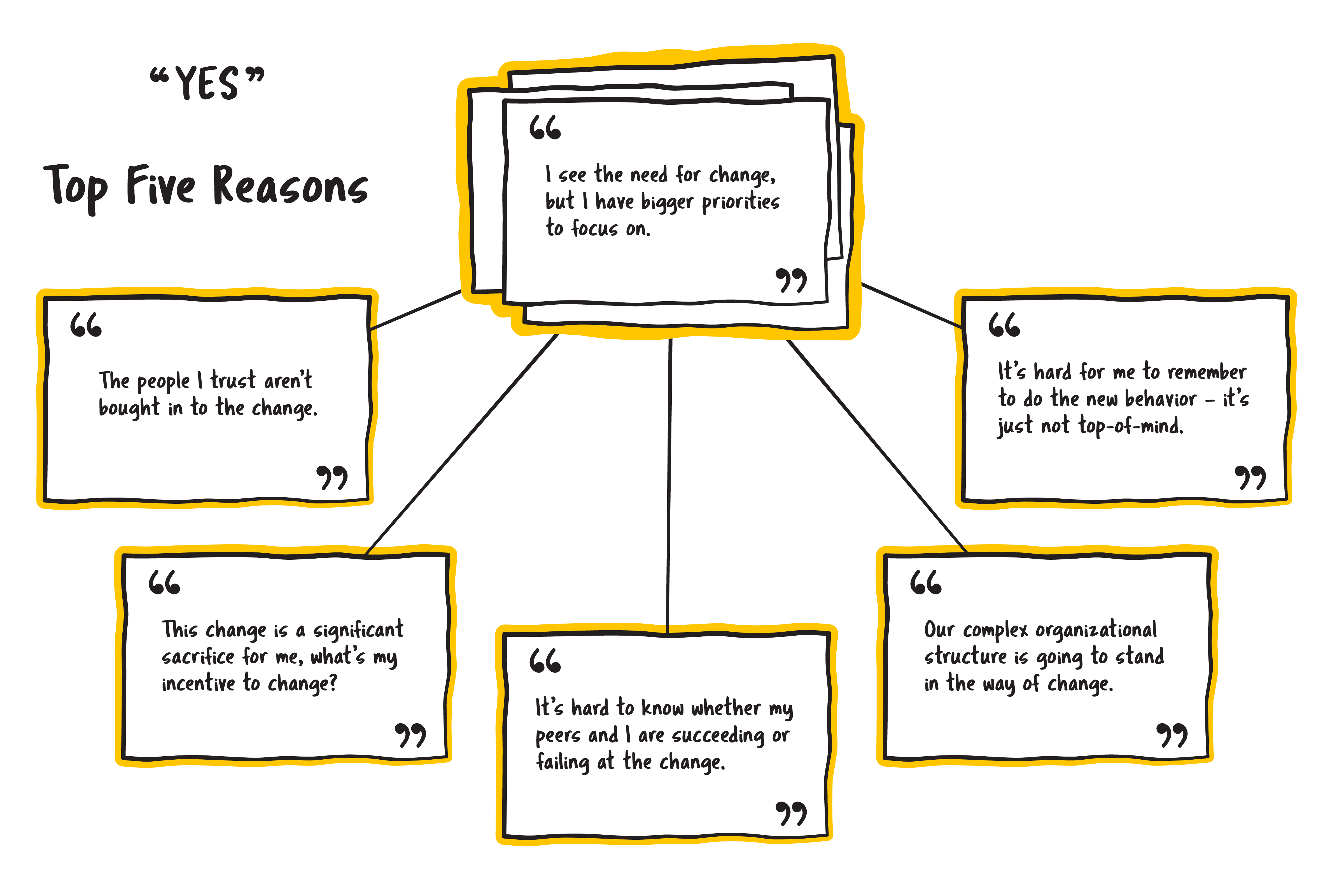
Step 3. Agree on the top five barriers.
As a group, review each participant’s top five cards, allow participants to explain their reasoning (if desired), and provide time for questions. Then, agree on the top five barriers together.
Result: Your group now has five specific barriers to carry into Round 3. Record your assumptions, set aside your group’s five barriers, and move on to Round 2 to check assumptions that may have surfaced.
Round 2: Understand Audience Behaviors
Step 1. Identify participants.
Identify individuals who represent the full range of affected functions, geographies, and positions. Ask if they would participate in a 15-minute activity to share their perspective on the planned change.
Step 2. Participants play.
Ask participants to go through the same process your group did in Round 1. Record their selections.
Step 3. Interview & listen.
Once participants have selected their top five barriers, ask them why they selected each barrier. Listen and record their answers.
Analysis: After all interviews are complete, look at the results together. Look for patterns and themes. Move on to Round 3 to respond to the barriers you are finding.
Round 3: Respond to Barriers
Who plays:
People responsible for delivering a change, after playing Rounds 1 and 2.
Step 1. Compare & determine.
Compare your group’s selection in Round 1 with your analysis of interviews from Round 2. Determine what cards your group has selected are replaced by the cards that the participants have selected. You should only have five barrier cards total.
Step 2. Flip the five cards.
Flip the five quote cards over to the colored side to reveal the overarching barrier. The large text names each barrier to focus on the solution. Brainstorm ways to reduce or remove that barrier.
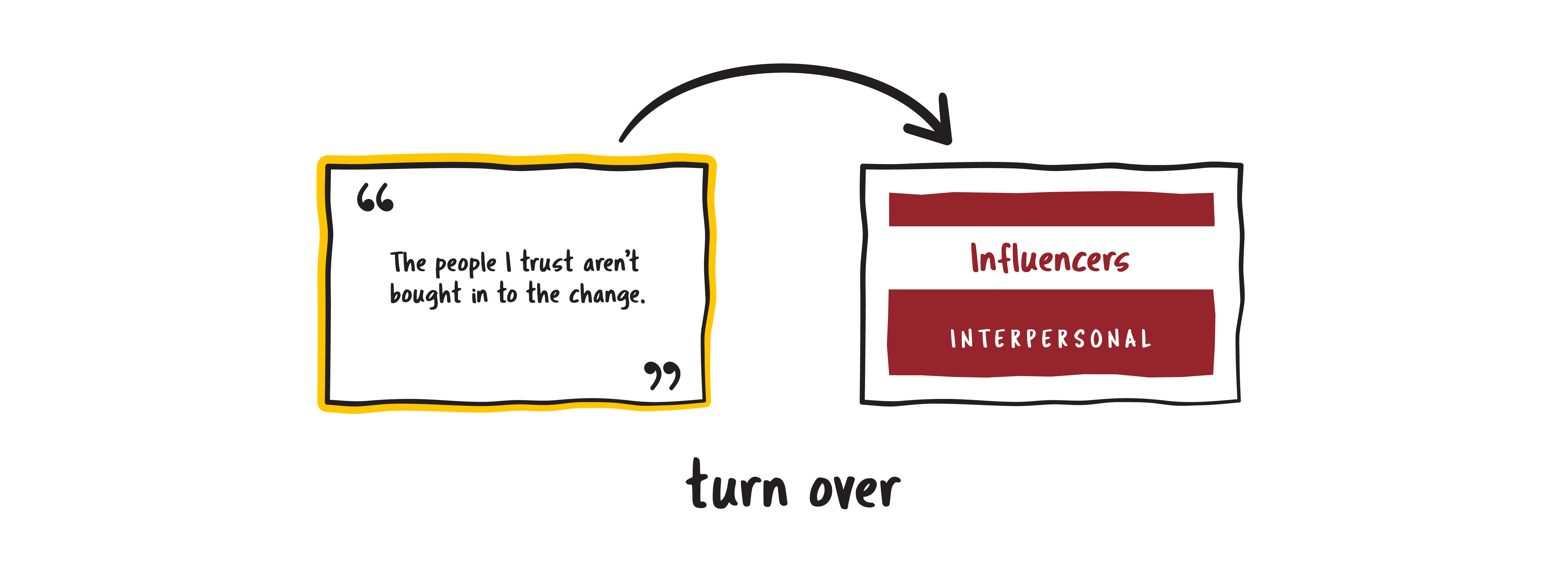
To better prioritize your efforts, consider the categories of your top five cards. Barriers within the same category are grouped by color. Are many of your cards the same color? If so, focusing on that part of the change experience first will have the biggest impact on activation.
If your cards are many different colors, place them in this order: Problem Alignment, Solution Alignment, Engagement, Interpersonal, The Unknown, Execution. By prioritizing your efforts in this order, you’ll follow the natural sequence of the Activation Curve.
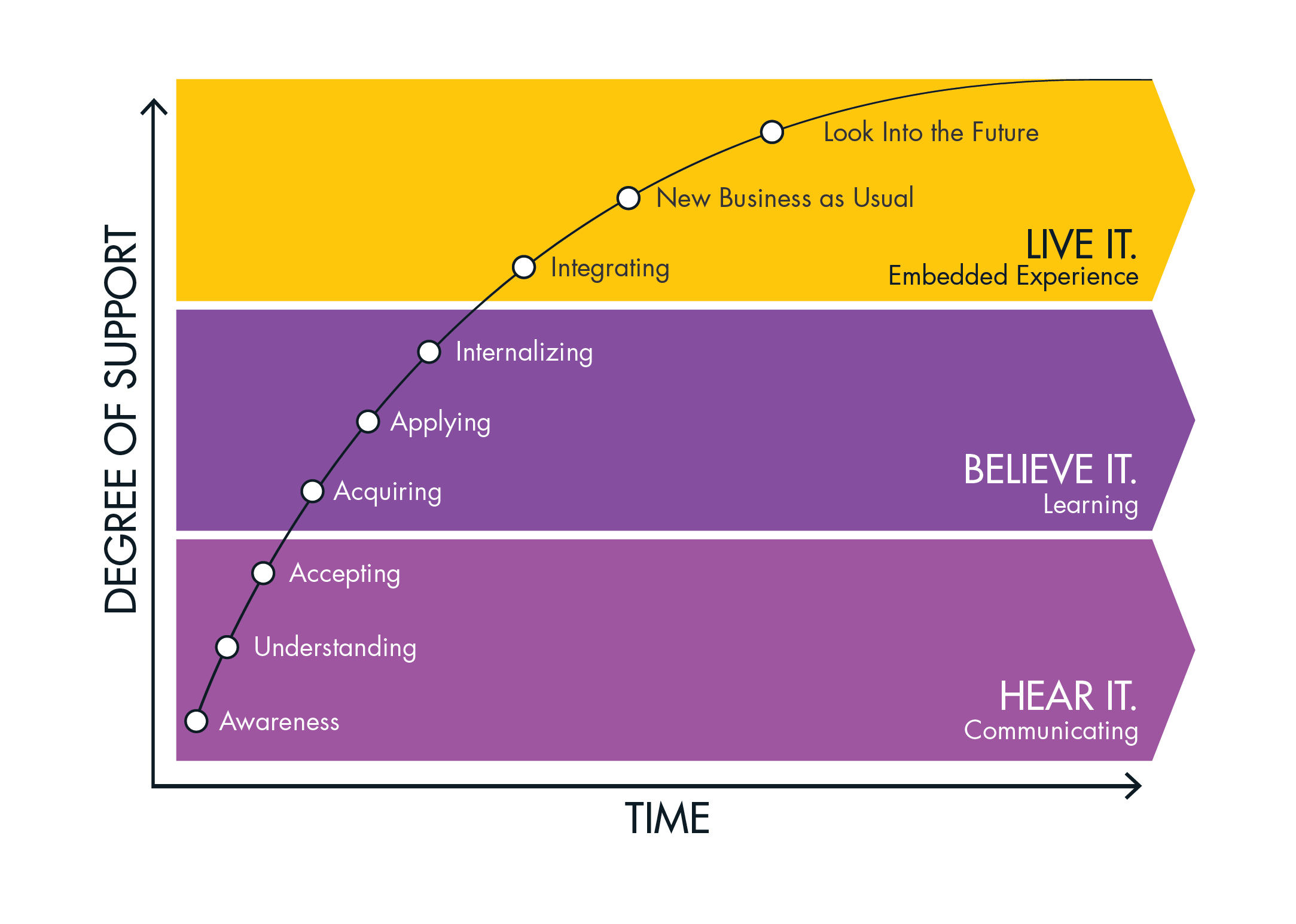
Step 3. Create an activation plan.
Create an activation plan based on your insights. Additional activation planning resources can be found below.
The Barriers to Change card deck—available for sale in our online store—is a wonderful resource for your strategy activation efforts. It provides clarity, gets people on the same page, and gives you powerful insights that will ultimately help you overcome barriers and accelerate change.
Additional Resources
To learn more about activating change, we also recommend you check out the following resources:
- Activation Curve Worksheet
- Strategy Activation Tactics Poster
- Strategy Activation Webinar #1: From Plan to Action, Bring Your Strategy to Life (video)
- Strategy Activation Webinar #2: Practical Tools to Design a Strategy Activation Plan (video)
As always, feel free to reach out to us with questions or comments on this post!

Tips and Tools for Great Hybrid Workplace Communication and Collaboration
As hybrid teams become the new normal, what’s the secret (or key) to nurturing robust communication and collaboration between people in the office and those working remotely? Adopting a digital-first mindset. Here’s how to get started.
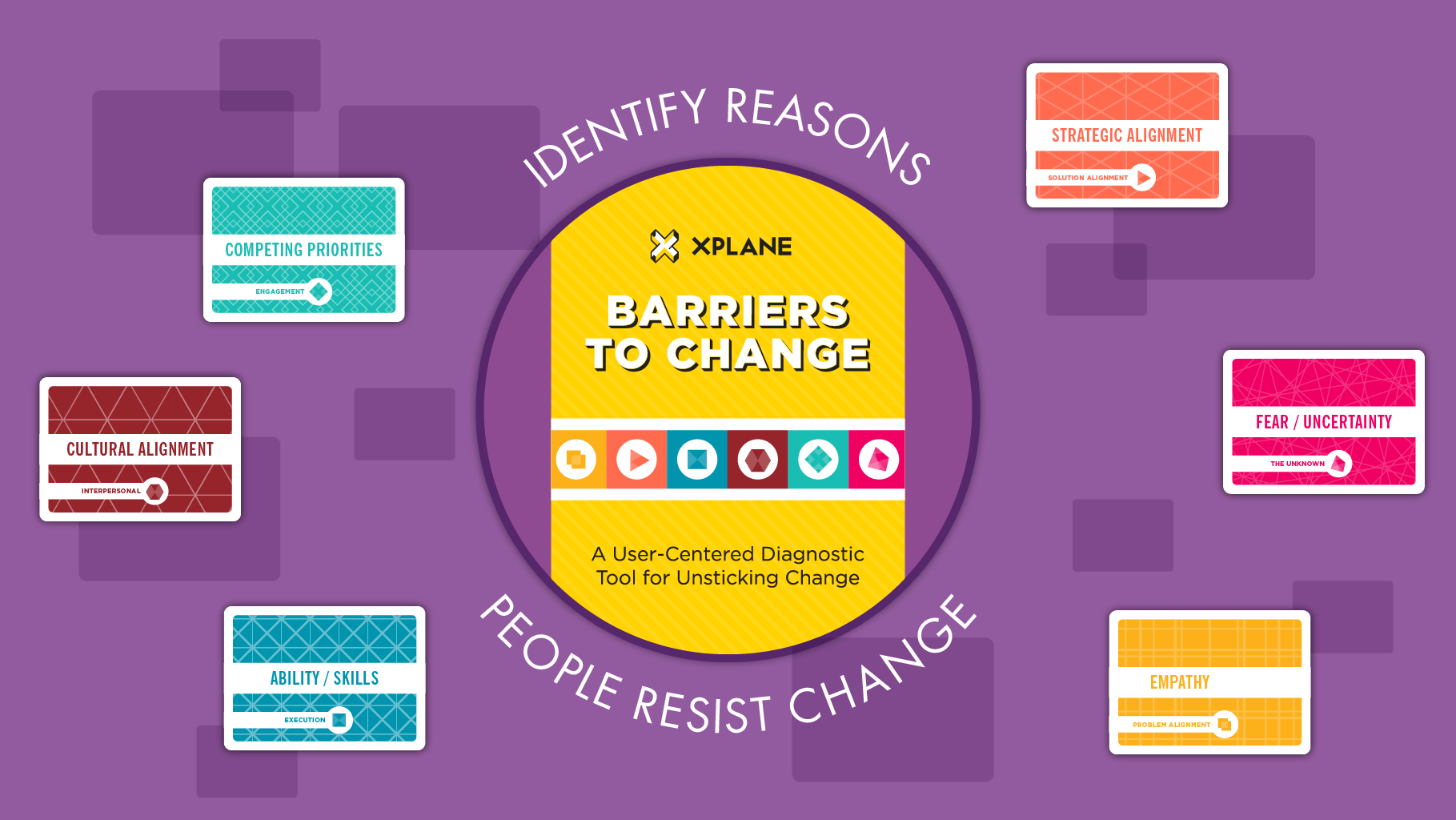
A Card Game to Identify Reasons People Resist Change
In 25+ years of leading organizations through change, XPLANE has encountered more than 35 distinct barriers to change. With a rumbling herd of barriers like this, where do you start when you’re leading organizational change? We recommend an engaging tool called our Barriers to Change card game. Here’s how it works.
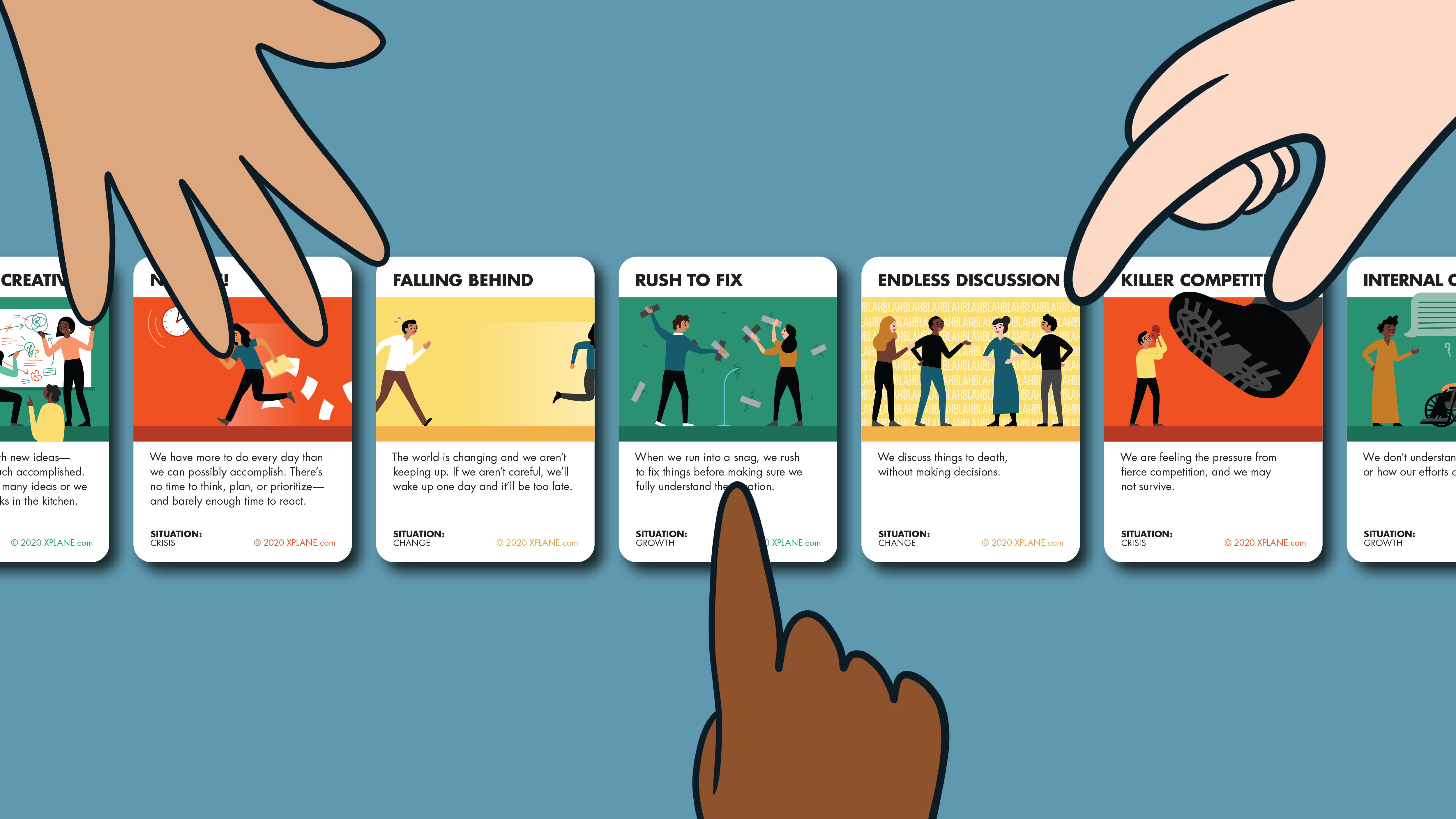
A Card Game to Uncover the Issues of Growth, Crisis, or Change
Faced with a torrent of high-priority needs jostling for your attention? Calm the sea of demands with a card game that brings teams together to identify and prioritize challenges and determine solutions for a clear path forward.